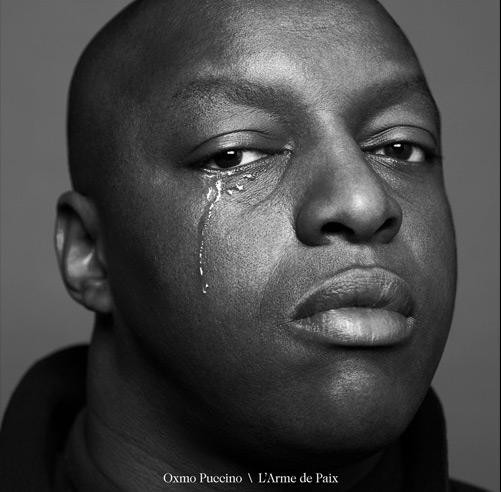news
Designing Narratives for the iPhone: TREEHOUSE

TREEHOUSE — App Trailer from Jason Franzen on Vimeo.
Here at Electric Literature, we’re often thinking about storytelling on new devices. Recently we discovered TREEHOUSE, a nicely designed narrative collaboration developed specifically for the iPhone. We asked editor Joe Wachs and designer Jason Franzen to write a bit about the intention, process and challenges of designing for an emerging literary form.
What is Treehouse?
JOE WACHS: TREEHOUSE is a true story, fictionalized to protect the guilty, which took place over the course of the year 1996 via back-and-forth emails between two people. The collection of e-mails were discovered by accident, then edited for clarity, rhythm, and flow by our publishing company, FIRST F15TEEN. The project, therefore, took over 15 years to gestate. My publishing partner, Jason Franzen, conceived of an elegant format for navigating these e-mails based on our own email dialogues. Jason and I have not met face-to-face in over six years, which added to the excitement of bringing this project to life.
In 2004, I completed a Masters Degree from NYU’s Gallatin Division. This was a self-designed program allowing me to study both theatre and technology, which led me to digital storytelling. My thesis, New Storytelling Machines (http://hybridpoetics.com/hybrid/tapra.html) became the foundation upon which I built TREEHOUSE.
“Stories are pushing past linear formats not out of mere playfulness, but in an effort to give expression to the characteristically twentieth-century perception of life composed of parallel possibilities…to capture such a constantly bifurcating plot-line, however, one would need more than a thick labyrinthine novel or a sequence of films. To truly capture such cascading permutation, one would need a computer.” Hamlet on the Holodeck — The Future of Narrative in Cyberspace by Janet H. Murray.
I remember reading hundreds of books on the subject of digital narratives, new story formats, virtual reality, digital aesthetics, telematics, multilinear storytelling, hypermedia: Ergodic Literature; Narrative as Virtual Reality; Computers as Theatre; Digital Aesthetics; the list goes on and on…’til the dot com dawn…
Fortunately for me, Jason Franzen could give a rat’s ass about any of this theoretical hoola-balu. His aim was to communicate the story and the message of TREEHOUSE in the simplest form possible.
How did communication inform the design choices you made?
JASON FRANZEN: Communication has multiple parallel tracks running side-by-side in the TREEHOUSE project. First, we have the source material tête-à-tête as the foundation running throughout. In this couple’s private communications, the thing I found most interesting was the closed nature of it all — being a “back-and-forth” between two romantics separated by great distance, yet able to digitally whisper in each other’s ear with certainty of privacy and directness; that element of the communication formula led me to design an experience where the tightly closed loop was emphasized in a clear two-color palette. By doing so, his & her notes would read like passionate Morse-code.
Were there specific influences when the idea formed?
JW: Sure. There’s a clear synthesis between Griffin & Sabine and The Notebook, but more importantly, the early hypertext novel Afternoon, A Story by Michael Joyce helped to bring these ideas to the forefront. When we agreed upon the idea to bring these e-mails to the public, we explored the iPhone as a possibility and in doing so discovered Shadows Never Sleep, which is a perfect seed to have been planted in the mobile space. What makes Shadows so appropriate is its form; a narrative is conveyed, yet with features of the iPhone, not the turning of pages. This will be the future of storytelling, in my opinion, when authors stop confining their imaginations to the limiting manifestations of the book, just as artists in the historic avant-garde stopped confining their artwork to the boundaries of the canvass. Why must there be fake pages? It makes no sense.
What other aspects of communication do you feel are essential to the project?
JASON FRANZEN: The framework of e-mail messages themselves. E-mails from 15-years-ago follow the same basic principles as they do today: they have a From, To, Date and Time Stamp, a Subject Line and the Body of the message. With this couple’s relationship and the contents of their messages, each byte of data plays a part in the story. I felt this should be elevated to supporting actors in the drama. In this context, the seemingly innocuous time-stamp, and more specifically the gaps between the time-stamps, create a tension and set a rhythm that anyone who has ever pressed SEND and waited for a reply can attest to. For this, I designed a visual time-line not normally seen in e-mail to highlight these bursts of emotional thrust/parries and the inevitable retreats each lover makes — whether from exhaustion or practicality.
Lastly, an important part of the project is an invisible layer of communication (as far as the reader is concerned): the dynamic communication between the Editor and Design that surrounded the creation of TREEHOUSE. As the Designer, my goal was to package and present the content presented by the Editor in a way that made the unfolding story feel natural and authentic. At the same time, I hoped to bring a level of art to the proceedings that might frame the fact that this esoteric project was truly a new dynamic for publishing and storytelling — a unique combination of human emotions, technology, reality and staging. Knowing Joe’s background with theatre, I challenged myself to design a “set” that would be worthy of the effort he invested in unearthing and shining this gem of a story. And, all of this sense of artistic aspiration and inspiration came to me through his own e-mails — arriving at all hours, in all shapes and sizes — all varieties of direction. I found that despite its limitations, these well-crafted digital notes with witty subject lines threaded together across time could paint a picture of passion as clear as any performance I have witnessed.
More of First Fifteen’s work can be seen at http://www.FirstFifteen.com.









